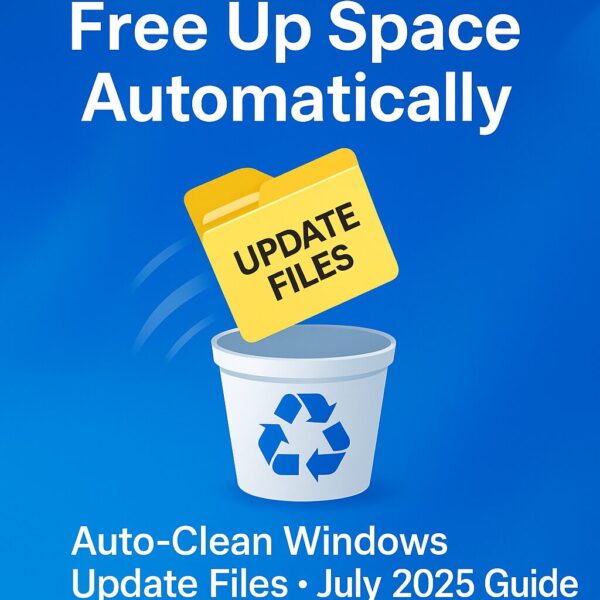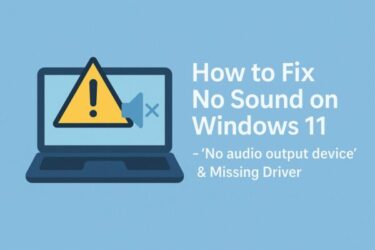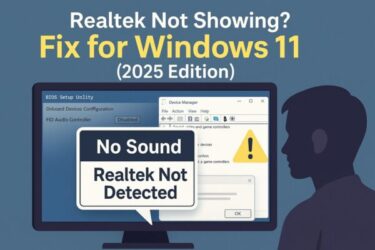
“Why is my C drive running out of space?”
If you’re using Windows 10 or 11, this might be the hidden culprit: leftover update files.
Windows updates are important for security and stability, but they also leave behind a trail of files — temporary data, update packages, and even backups of previous versions. Over time, these unnecessary files can consume gigabytes of storage, slowing down your PC and reducing available space.
In this guide, we’ll walk you through how to automatically delete these update files, using trusted built-in features like Storage Sense and optional tools like Task Scheduler.
And we’ll explain everything — even the risks — in a way that’s easy to understand, whether you’re a beginner or an advanced user.
What Are Windows Update Files?
Every time your PC installs a Windows update, it creates various files during the process:
- Temporary files downloaded for installation
- Cached update packages
- Old version backups (e.g., the Windows.old folder)
- Failed update logs
These files are not automatically deleted, even after the update is complete. That means they continue to sit on your C drive, using precious space.
Did You Know?
It’s not uncommon for leftover Windows update data to take up 5GB to 10GB — or even more — if not regularly cleaned.
Method 1: Use “Storage Sense” (Recommended for Most Users)
What is Storage Sense?
Storage Sense is a built-in Windows feature that automatically deletes unnecessary files, including update files, Recycle Bin contents, and temporary app data.
It’s the safest and most beginner-friendly way to keep your storage healthy.
How to Enable Storage Sense
- Open Settings → Go to System → Click Storage
- Toggle Storage Sense to ON
- Click on “Configure Storage Sense or run it now”
- Scroll down to “Temporary Files”
- Check the box for “Windows Update Cleanup”
- Choose when to run it: Every day, week, month, or only when low on space
- (Optional) Click “Clean now” to run it immediately
Storage Sense is the method recommended by Microsoft as of July 2025.
It is future-proof, secure, and easy to manage even if you are not tech-savvy.
Method 2: Use Task Scheduler (For Intermediate Users)
If you want more control over when cleanup happens, Task Scheduler allows you to schedule automatic tasks like running cleanup tools.
Steps to Set Up
- Press Windows + S and search for Task Scheduler
- In the left panel, right-click Task Scheduler Library → Select Create Basic Task
- Name it something like “Windows Update Cleanup”
- Set the trigger (e.g., weekly or monthly)
- Under “Action”, choose Start a program
- In “Program/script” box, type:
7. In “Add arguments” box, type:
Important Note:
As of Windows 11 version 24H2 (mid-2025), running cleanmgr.exe from Task Scheduler is unreliable on some systems.
Microsoft is phasing out this legacy tool in favor of Storage Sense.
Method 3: Create a Cleanup Script (Advanced Users)
This method involves creating a .bat file that runs the cleanup command and scheduling it via Task Scheduler.
How to Do It
Open Notepad
Paste the following command:
Save the file as cleanup.bat (choose “All Files” under file type)
Use Task Scheduler (Method 2) to run this .bat file regularly
⚠ Again, this uses cleanmgr, which is deprecated. Use it with caution and consider migrating to Storage Sense whenever possible.
July 2025: Important Notes About Deprecation and New Behavior
Here’s what you need to know about current trends and changes:
| Item | Details |
|---|---|
| cleanmgr.exe | Officially marked as deprecated by Microsoft; users are encouraged to switch to Storage Sense |
| Windows 11 24H2 | cleanmgr may not run via Task Scheduler in newer environments |
| Settings UI changes | Temporary files and cleanup options are now consolidated under “Settings > System > Storage” |
| Enterprise environments | PowerShell scripts and Group Policies are the preferred methods for managing cleanup tasks |
As Windows evolves, tools like Storage Sense will become the standard. Learning how to use them now will save you a lot of headaches in future updates.
Bonus: Other Hidden Space-Hogs You Can Clean Up
- Windows Defender logs
Accumulated scan history and virus definitions may take up space. - Microsoft Store cache
Can build up over time, especially with large apps or games. - System restore points and recovery partitions
Useful but sometimes unnecessarily large — only delete if you know what you’re doing.
Tip: Go to “Settings > System > Storage > Temporary files” and review all categories before running cleanup.
FAQ: Is It Safe to Delete Update Files?
Yes, in most cases it is safe.
- “Windows Update Cleanup” only removes obsolete and unused files.
- It will not remove pending updates or rollback data for the most recent version.
But if you recently performed a major upgrade (like from 22H2 to 24H2), be cautious:
- Deleting the Windows.old folder removes your ability to revert to the previous version.
Summary Table: Which Method Is Best for You?
| Method | Best For | Pros |
|---|---|---|
| Storage Sense | Beginners & most users | Easy to use, officially supported, future-proof |
| Task Scheduler | Intermediate users | Flexible, scheduled automation |
| Batch Script | Advanced users | Custom automation but relies on deprecated tools |
Final Thoughts
Windows Update files may be hidden, but they take up very real space. By automating the cleanup process, you can:
- Free up several gigabytes
- Improve performance
- Prevent update-related storage errors
Take a few minutes to configure Storage Sense or schedule cleanup — your C drive will thank you!
✔️You might also find these helpful:
▶︎[Warning] Graphics Driver Broken After Windows Update? Here’s How to Fix It (Step-by-Step Guide)
▶︎Office Not Opening or Crashing After Windows Update? Here’s How to Fix It (2025 Guide)


